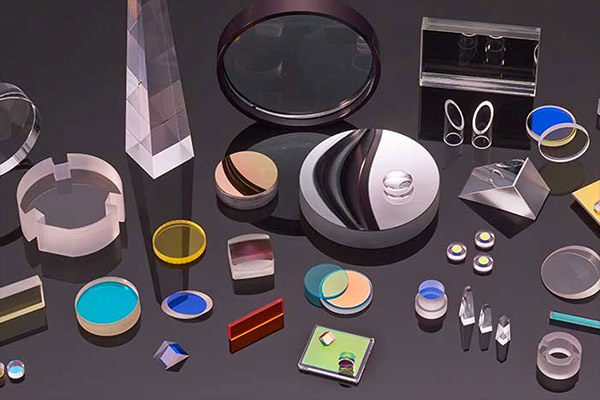How China’s CNC Machining Experts Tackle High-Precision Challenges

===INTRO:
In the realm of high-precision manufacturing, China has emerged as a formidable player, driven by advanced CNC machining expertise and innovative problem-solving approaches. As the global demand for intricate components with tight tolerances continues to grow, Chinese CNC machining experts are rising to the challenge—delivering tailored solutions that meet exact specifications, overcoming complex technical difficulties, and leveraging extensive material knowledge. This article delves into how China’s CNC machining industry masters these high-precision challenges through a combination of technological prowess, skilled craftsmanship, and strategic experience.
## Mastering Custom CNC Machining: Tailoring Solutions to Client Designs
Chinese CNC machining companies excel at transforming complex client designs into tangible, high-precision components. Custom machining begins with a thorough understanding of client drawings, specifications, and functional requirements. Manufacturers utilize advanced CAD/CAM software to interpret detailed designs, ensuring that every dimension and surface finish conforms precisely to client expectations.
One of the core strengths lies in their ability to customize tooling and processes for each unique project. For intricate geometries, multi-axis CNC machines are employed, enabling simultaneous movements and reducing errors. This approach allows for complex features such as undercuts, deep cavities, and micro-holes to be machined with high accuracy.
Furthermore, Chinese manufacturers emphasize proactive communication with clients during the design stage, offering suggestions to optimize manufacturability without compromising functionality. This collaborative approach ensures that custom solutions are not only precise but also efficient and cost-effective.
To achieve this, they invest heavily in high-precision measurement and inspection equipment, such as coordinate measuring machines (CMMs), ensuring that each custom part meets stringent tolerances. By integrating these advanced technologies, Chinese CNC machining providers deliver tailored components that adhere meticulously to client specifications.
The capacity for rapid prototyping also plays a vital role. Clients often require iterative adjustments, and Chinese firms are adept at quickly translating design modifications into high-precision prototypes. This agility accelerates development cycles, enabling clients to bring their products to market faster.
Beyond just manufacturing, these experts also provide comprehensive surface finishing services—such as polishing, anodizing, and coating—to meet aesthetic and functional demands. This holistic approach ensures that the final product aligns with both technical and visual expectations.
In summary, mastering custom CNC machining in China involves a seamless integration of technology, design collaboration, and precision measurement. This ensures that client-specific requirements are met with impeccable accuracy, even for the most complex and demanding projects.
## Overcoming High-Precision Difficulties in Complex Component Manufacturing
Manufacturing high-precision components often involves tackling formidable technical challenges, especially when dealing with complex geometries and tight tolerances. Chinese CNC machining experts approach these difficulties with a strategic blend of advanced equipment and process optimization.
One common challenge is machining parts with intricate internal features, such as deep cavities and micro-holes. To address this, manufacturers employ multi-axis machining centers equipped with high spindle speeds and enhanced stability. These machines allow for accessing difficult-to-reach areas without sacrificing accuracy or surface quality.
Another issue is controlling thermal expansion during machining, which can distort critical dimensions. Chinese firms mitigate this by implementing strict thermal management practices—such as maintaining stable ambient temperatures and using cutting tools designed to reduce heat generation. Additionally, they employ high-precision cooling systems to keep materials at consistent temperatures.
Vibration damping and rigidity are crucial when machining high-precision parts. Advanced fixture designs and machine upgrades are utilized to minimize vibrations, ensuring surface finish and dimensional accuracy. The use of high-quality cutting tools with optimized geometries further enhances machining stability and precision.
Material properties pose another layer of difficulty. Hard or brittle materials like titanium, ceramics, or advanced composites require specialized cutting parameters and tooling. Chinese CNC specialists develop tailored machining parameters for each material, balancing cutting speeds and feed rates to prevent tool wear or damage.
Quality control is integral to overcoming these challenges. Non-contact measurement systems, such as laser scanners and 3D scanners, are employed inline to detect deviations early in the process. This real-time feedback allows for immediate adjustments, maintaining the high standards demanded by clients.
Moreover, continuous process refinement and employee training ensure that operators are well-versed in managing complex projects. This expertise helps to troubleshoot issues promptly and adapt machining strategies on the fly, reducing scrap and rework rates.
In sum, Chinese CNC experts address the high-precision difficulties of complex component manufacturing through technological innovation, meticulous process control, and a deep understanding of material behavior—ensuring reliable, accurate, and high-quality outcomes.
## Leveraging Material Expertise for Superior CNC Machining Performance
Material selection is fundamental in high-precision CNC machining, especially when dealing with specialized components. Chinese manufacturers leverage extensive material expertise to optimize machining performance, prolong tool life, and enhance final product quality.
They work with a broad spectrum of materials—metals like aluminum, titanium, stainless steel, and superalloys, as well as advanced composites and ceramics. Each material presents unique machining challenges; for instance, titanium is tough and tends to cause tool wear, while ceramics are brittle and prone to cracking.
To tackle these issues, Chinese CNC experts select appropriate cutting tools, coatings, and cutting parameters tailored to each material. For example, high-speed steel or carbide tools with special coatings such as TiAlN are used for hard metals to reduce wear. For composites, low cutting speeds and specialized tools prevent delamination and delamination.
Material knowledge extends beyond machinability to understanding properties like thermal conductivity, hardness, and chemical stability. This understanding informs decisions on cooling methods, lubrication, and process sequencing, all of which influence accuracy and surface finish.
In some cases, materials require pre-treatment or post-processing to achieve desired properties. Chinese manufacturers often collaborate with material suppliers to understand material behavior better and incorporate heat treatments or surface modifications into the process flow.
The ability to work with innovative materials, including lightweight alloys and high-performance composites, allows Chinese CNC firms to meet the demanding specifications of aerospace, medical, and electronics sectors. This material mastery ensures components are not only precise but also durable and fit for specialized applications.
Training the workforce on material science principles further enhances the team’s capacity to troubleshoot issues and optimize machining conditions. This ongoing education ensures that they stay ahead of material-related challenges and deliver superior results consistently.
By harnessing comprehensive material expertise, Chinese CNC machining providers elevate their performance, enabling the production of complex, high-precision parts that meet the rigorous standards of global industries.
## Essential Experience in Tackling Challenging High-Precision Projects
Experience plays a crucial role in the success of high-precision CNC machining, especially when handling challenging projects with intricate geometries or demanding tolerances. Chinese manufacturers emphasize accumulated expertise as a key factor in consistently delivering quality results.
Long-standing experience enables operators and engineers to recognize potential issues early in the process. They develop an intuitive understanding of how different materials respond to specific machining parameters, reducing trial-and-error and saving valuable time.
Veteran technicians are skilled at designing effective fixturing and clamping solutions that ensure stability during machining. Proper fixturing prevents vibrations and positional shifts, which are critical in maintaining tight tolerances over complex parts.
Over years of working with diverse projects, Chinese CNC specialists have refined their process planning, identifying optimal sequences that minimize tool changes, reduce cycle times, and improve accuracy. This level of process mastery is vital when producing high-precision components with minimal deviations.
Experience also fosters innovation. Skilled teams often develop custom tooling and specialized machining techniques tailored to challenging projects, such as micro-machining or working with hard-to-machine materials. These innovations are based on lessons learned from previous complex projects.
Quality assurance procedures are another area where experience shines. Veteran staff implement rigorous inspection protocols, utilizing advanced metrology tools to verify dimensions at various stages. Their familiarity with common defects enables prompt corrective actions, preventing costly rework.
Furthermore, collaborating with international clients deepens understanding of global standards and expectations. This international exposure enhances problem-solving skills and ensures that Chinese manufacturers can meet diverse high-precision requirements.
In essence, the wealth of experience accumulated by Chinese CNC machining experts is the backbone of their ability to conquer difficult projects. It empowers them to navigate technical complexities, innovate solutions, and consistently produce high-precision components on time and within specifications.
## Global Case Studies: Solving Classic CNC Machining Challenges
Chinese CNC machining companies have built a reputation for solving some of the most complex, classic challenges faced by the global manufacturing industry. Through case studies, we see how they leverage their expertise, technology, and experience to deliver effective solutions.
One notable example involves manufacturing micro-sized aerospace components with extremely tight tolerances. The challenge was to produce parts with micro-holes and intricate internal features on a large scale. Chinese firms employed multi-axis CNC machines with high-precision laser measurement systems to ensure accuracy and consistency, ultimately meeting the strict aerospace standards.
Another case involved machining titanium components for medical implants. Titanium’s hardness and reactivity posed significant challenges. Chinese specialists developed specialized cutting tools, optimized cutting parameters, and employed advanced cooling techniques to prevent overheating and tool wear. Their approach resulted in smooth surface finishes and dimensional stability, essential for biomedical applications.
In the electronics sector, complex microelectronic parts with micro-scale features required innovative solutions. Chinese manufacturers utilized ultra-precision CNC machines combined with high-resolution inspection tools, enabling them to produce parts with micron-level accuracy. These solutions helped overcome issues related to burr formation and surface roughness.
A further example is the production of high-precision molds for automotive and aerospace industries. These molds demand extreme accuracy and surface quality. Chinese firms used advanced grinding and polishing techniques, along with thermal stabilization processes, to compensate for material expansion and contraction, ensuring that the final molds met exact specifications.
For challenging materials such as ceramics, Chinese technicians developed specialized tooling and processing techniques that minimized cracking and chipping. Their experience with brittle materials allowed them to produce complex ceramic parts used in high-tech sectors reliably.
In all these cases, the key to success was a combination of deep technical knowledge, experience-based process adjustments, and cutting-edge equipment. These projects exemplify how Chinese CNC experts address classic machining difficulties and set industry benchmarks.
Through ongoing innovation and continuous learning, Chinese manufacturers are not only solving traditional challenges but also pushing the boundaries of high-precision CNC machining to meet the evolving needs of global markets.
---
## OUTRO:
China’s CNC machining industry has demonstrated remarkable capability in mastering high-precision manufacturing challenges. By combining tailored solutions, technological advancements, material expertise, and extensive experience, Chinese experts continue to set new standards in precision, complexity, and quality. As global industries demand ever more intricate and reliable components, China’s continued innovation and problem-solving prowess will remain vital. Their success stories and ongoing commitment to excellence underscore China’s position as a global leader in high-precision CNC machining, shaping the future of advanced manufacturing worldwide.
